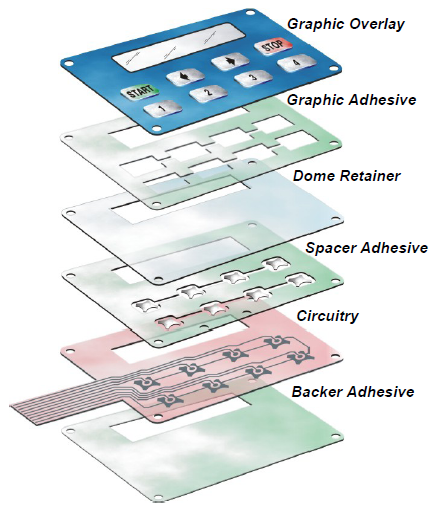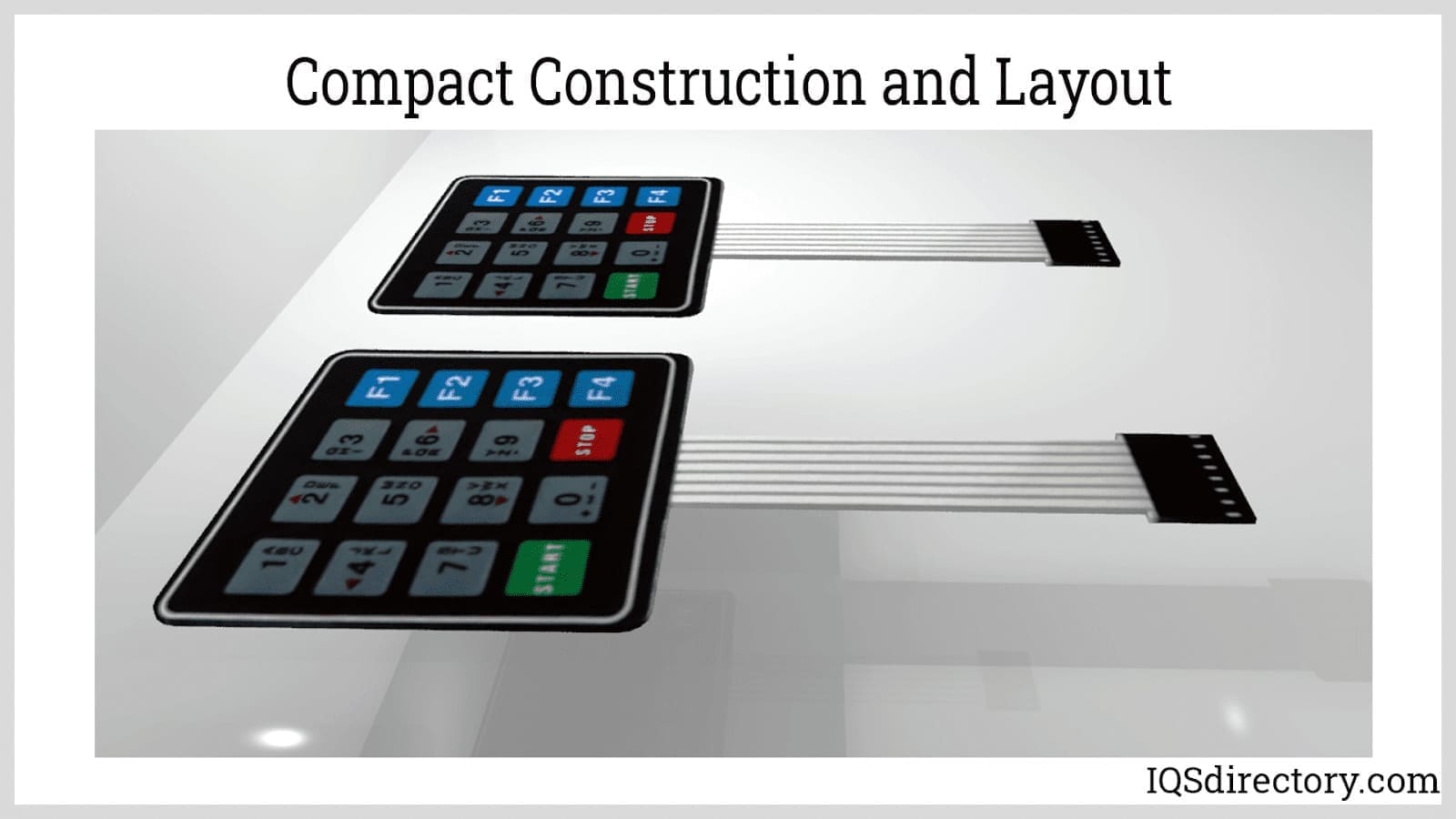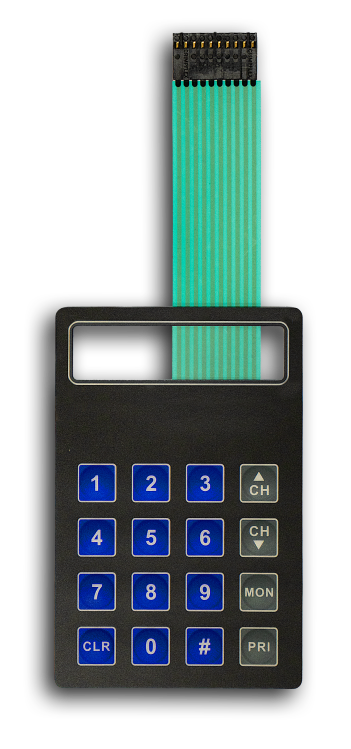How Membrane Switches Are Revolutionizing User Interface Design
How Membrane Switches Are Revolutionizing User Interface Design
Blog Article
Comprehending the Value of Membrane Switches in Individual User Interfaces
Membrane switches are integral elements in the style of reliable user interfaces, facilitating not just capability but likewise boosting visual charm and customer interaction. Their unique attributes, such as resistance to ecological variables and customizable designs, make them appropriate for a diverse array of applications across several industries. As we discover the various advantages and future patterns linked with Membrane innovation, it ends up being clear that these buttons are more than simply components; they stand for a merging of development and practicality. The effects of this modern technology on user experience are worth checking out further.
What Are Membrane Switches?

The spacer layer, which includes glue homes, enables the splitting up of the circuit layer from the overlay, making certain that the switch remains in a non-activated state till pushed. When pressure is put on the overlay, it presses the spacer layer, bridging the void and completing the circuit in the underlying layer. This style not only minimizes the physical room required for conventional mechanical buttons however also enhances the resilience of the device, as Membrane buttons are usually resistant to dust, dampness, and various other ecological aspects.
Commonly located in applications ranging from consumer electronics to medical devices, Membrane switches are essential to modern technology, offering a straightforward and reliable interface that lines up with modern layout demands.
Advantages of Membrane Buttons
While many switch modern technologies exist, Membrane Switches offer unique advantages that make them specifically preferable in different applications. One of the primary advantages of Membrane buttons is their portable style, which enables for space-saving applications in gadgets where genuine estate is limited. Their thin account not only enhances visual charm yet additionally facilitates light-weight building and construction.
Another considerable advantage is their resistance to environmental aspects. Membrane switches are usually sealed versus dampness, dirt, and pollutants, making them excellent for usage sought after settings, such as medical devices and industrial tools. This sturdiness extends the life expectancy of the button, decreasing upkeep expenses and boosting integrity.
Additionally, Membrane buttons can be tailored to fulfill details design needs, integrating special graphics and colors that improve user communication. Their tactile comments alternatives can likewise be customized to supply a satisfying customer experience. In addition, Membrane buttons are cost-effective, particularly in high-volume applications, as they can be generated effectively.
Applications in Various Industries

In the customer electronics market, Membrane switches are prevalent in tools such as microwaves, washing machines, and push-button controls. Their responsive comments and visual alternatives improve individual experience while offering a sleek, modern-day look. In addition, auto producers make use of Membrane switches in control panel controls and infomercial systems, where space is limited, and individual engagement is crucial.
Additionally, the commercial field leverages Membrane switches in control panels for equipment and devices, enabling intuitive operation in often harsh atmospheres. Their resistance to chemicals and moisture makes sure longevity and integrity in these applications. Overall, the adaptability of Continue Membrane Switches adds substantially to their extensive usage, making them important in various technical domain names.
Style Considerations for Membrane Switches

When making Membrane switches, several essential considerations need to be taken right into account to make sure optimum performance and individual experience. The choice of products is essential; choosing durable, top notch substrates can boost the button's long life and resistance to environmental variables such as wetness and temperature variations.
Secondly, the layout of the visuals overlay ought to prioritize quality and ease of usage. Icons and text should be readable, and the format should assist in user-friendly interaction (membrane switches). Furthermore, tactile responses is necessary; including a responsive dome or various other devices can enhance the customer experience by giving physical verification of activation
Another vital aspect is the switch's electrical efficiency. Designers must make certain that the conductive traces are properly developed to reduce resistance and avoid signal disturbance. This includes evaluating the required actuation force and making certain compatibility with the electronic elements they will user interface with.

Future Fads in Membrane Technology
As technology proceeds to advancement, Membrane buttons are positioned to advance considerably, driven by innovations in products and producing techniques. One emerging fad is the incorporation of innovative materials, such as conductive inks and adaptable substrates, which improve resilience and minimize the overall weight of Membrane switches. These materials not only enhance the tactile feedback but additionally enable the style of buttons that can stand up to harsher environmental problems.
Furthermore, the assimilation of touch-sensitive modern technologies is changing traditional Membrane Switches right into even more interactive user interfaces. Capacitive touch sensors embedded within Membrane switch panels can offer a much more intuitive and responsive user experience, straightening with the growing need for sleek, modern-day styles in consumer electronics.
Furthermore, improvements in printing methods, such as electronic and 3D printing, allow rapid prototyping and personalization of Membrane content buttons. This flexibility allows producers to react quicker to market needs and customer choices.
Last but not least, sustainability is coming to be a substantial focus, with producers exploring environmentally friendly materials and processes. As these fads unfold, the future of Membrane innovation promises boosted performance, visual allure, and ecological responsibility, solidifying their function in advanced individual interfaces across numerous industries.
Conclusion
In final thought, Membrane Switches represent a vital element in the style of customer interfaces, incorporating functionality with aesthetic flexibility. Their advantages, consisting of resilience and resistance to environmental variables, make them appropriate for diverse applications throughout different sectors. Thoughtful layout considerations enhance customer interaction and experience. As advancements in innovation continue, the advancement of Membrane switches is anticipated to additional improve interface, driving advancement and improving functionality in a progressively intricate technological landscape.
Membrane switches are important elements in the design of efficient individual interfaces, promoting not just capability but also boosting aesthetic appeal and user interaction.Membrane Switches serve as a crucial component in numerous customer interfaces, promoting a smooth communication between customers and electronic tools.While many switch technologies exist, Membrane Switches offer distinctive benefits that make them especially desirable in different applications.Furthermore, Membrane switches can be customized to fulfill certain style requirements, including unique graphics and shades that enhance customer interaction.In conclusion, Membrane Switches represent an essential element in the layout of user interfaces, incorporating functionality with visual flexibility.
Report this page